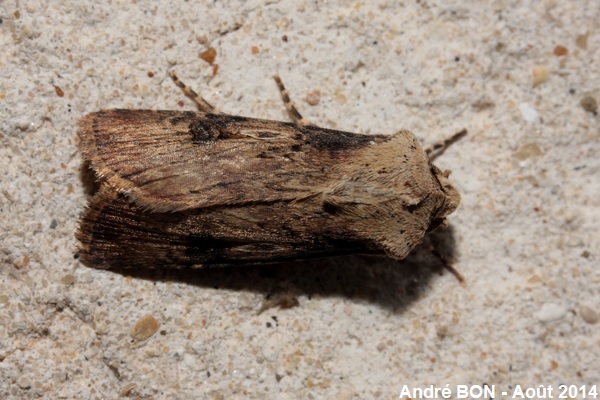

| Shuttle-shaped Dart (Agrotis puta (Hübner, 1803)) |


|
|
Scientific name: Agrotis puta (Hübner, 1803) Common name: Shuttle-shaped Dart French name: Noctuelle des Renouées Order: Lepidoptera Suborder: Heterocera Family: Noctuidae Subfamily: Noctuinae Wingspan: 30 to 32 mm. Biotope: Woodland edges, meadows, cultivated areas, parks and gardens. Geographic area: Southern Europe as far as Turkey, north to Germany and Great Britain. Flight time: March-April then August-October. Number of generations : 2 Caterpillar: Greyish brown with sparse hairs and paler subdorsal markings. The head is pale brown. Host plant: Many wild of cultivated low growing plants. |
Shuttle-shaped Darts show an important sexual dimorphism. Males have pale brown fore wings while females have blackish brown fore wings. The reniform spot is outlined with black. The orbicular spot is elongated and shuttle-shaped. There is often a thin black collar at the back of the head. It is followed by a pale and hairy thorax. Males' antennae are pectinated, females' ones are thread-like. The hind wings are whitish to pale yellowish. There is a similar species, the Grouville Dart (Agrotis catalaunensis) which is very difficult to separate from the Shuttle-shaped Dart. This species is found in the east of the Mediterranean Basin. It is limited to the Mediterranean coastal areas in France. Female Grouville Darts are paler and smaller than female Shuttle-shaped Darts. |
| [To know more about the Shuttle-shaped Dart] [Next picture] [Top] |

|
Upper side view. No possible confusion, we are far from the Mediterranean sea. |
| [To know more about the Shuttle-shaped Dart] [Previous picture] [Top] |

|
Side view. |